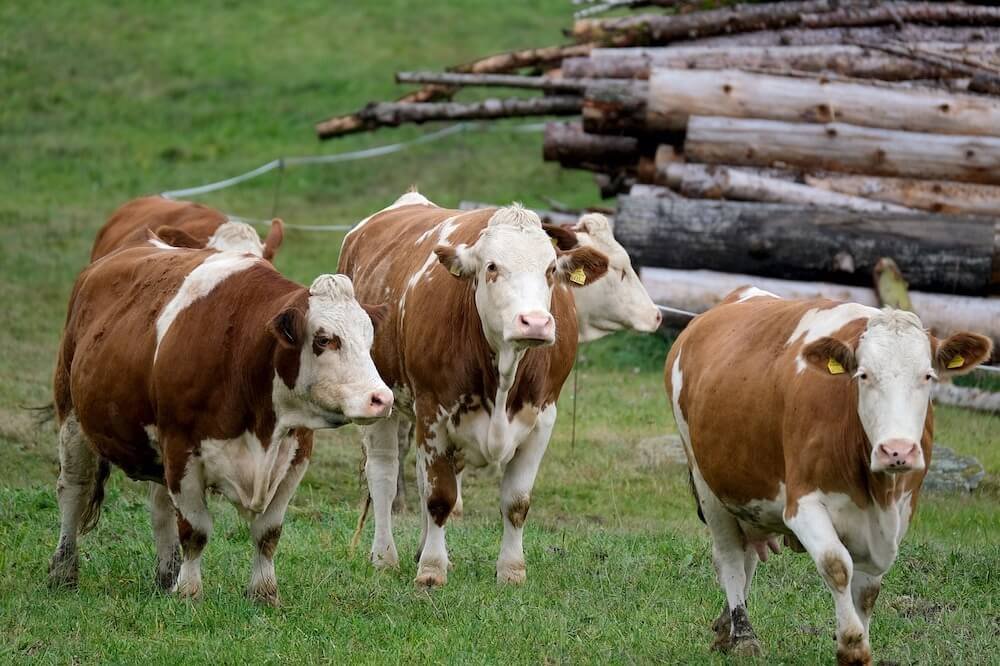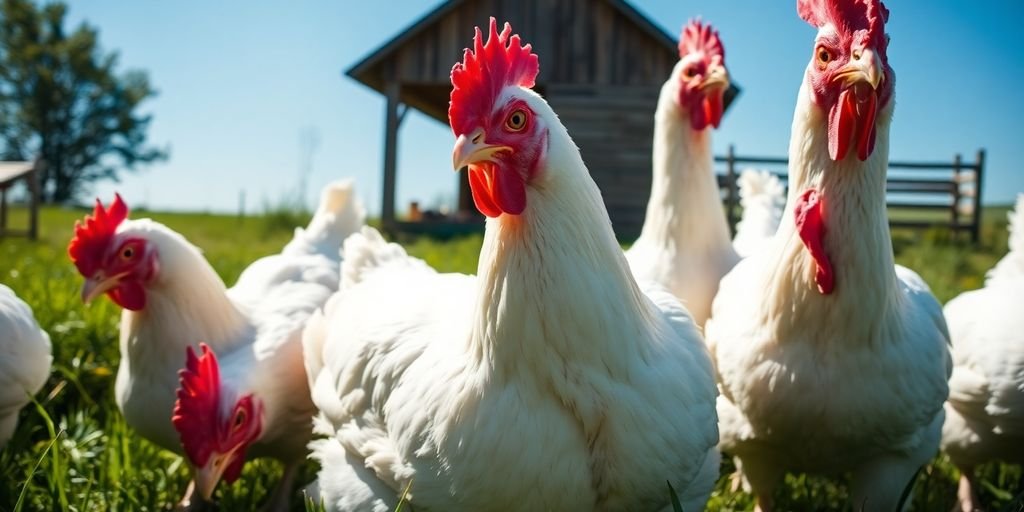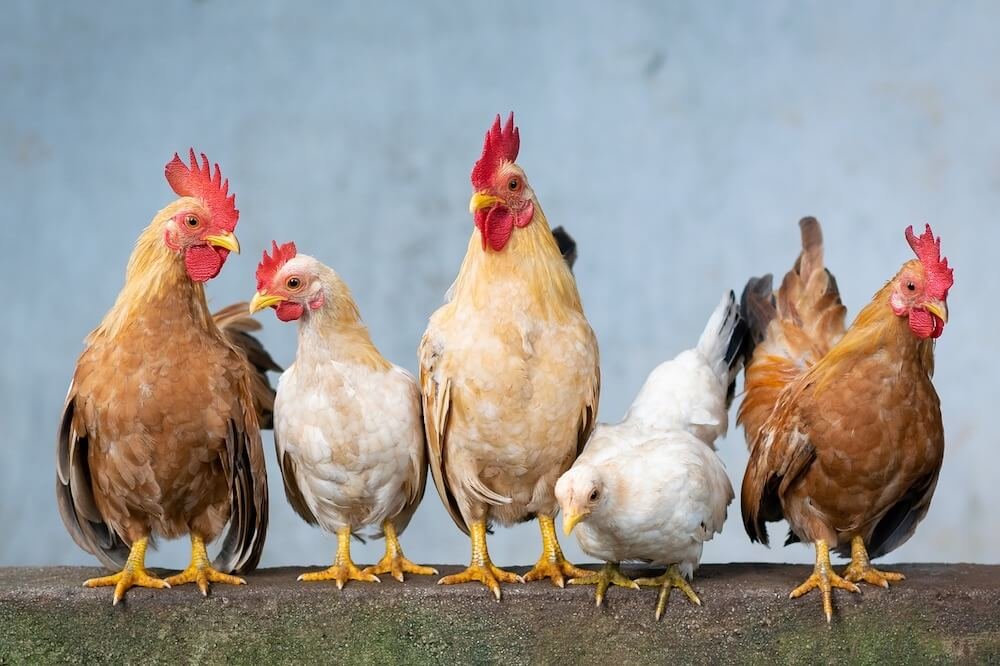Raising Meat Rabbits: A Sustainable Homesteading Endeavor
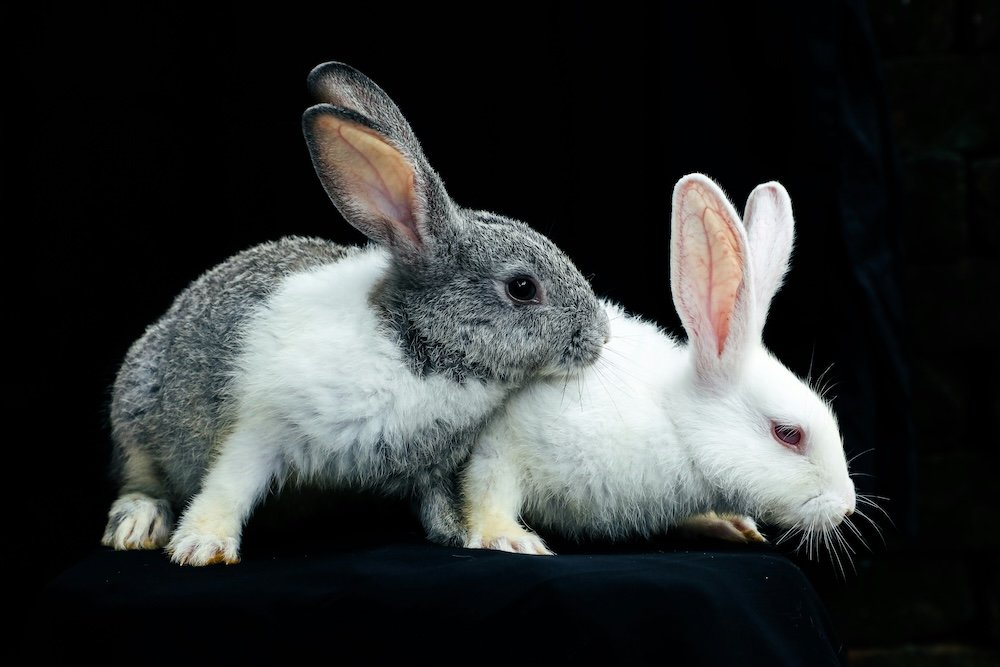
Thinking about adding meat rabbits to your homestead? It’s a pretty smart move. These little guys are super efficient at turning feed into protein, and they don’t need a ton of space. Plus, they grow fast, so you won’t be waiting around forever for a harvest. Whether you’re just starting out or you’ve been homesteading for a while, meat rabbits can be a great way to get more control over your food supply. They’re also pretty easy to care for, which is a big plus.
Key Takeaways
- Meat rabbits are a good choice for homesteads because they grow quickly and don’t need much room.
- Getting started with meat rabbits means figuring out what you’ll spend and what supplies you’ll need.
- There are many benefits to raising meat rabbits, like their quick growth and useful byproducts.
- Picking the right meat rabbit breed for your area is important for success.
- Good housing and proper feeding help your meat rabbits grow well and stay healthy.
Why Choose Meat Rabbits for Your Homestead?
Efficient Protein Production
When we think about adding livestock to our homestead, efficiency is key. Meat rabbits really shine here. They convert feed to meat at an impressive rate, much better than larger animals like cattle or pigs. This means we can produce more protein with less feed, saving money and resources. Plus, they mature quickly, so we’re not waiting years for a return on our investment. It’s a win-win for sustainable protein production.
Minimal Space Requirements
One of the biggest advantages of raising meat rabbits is their small footprint. Unlike cows or even goats, rabbits don’t need acres of pasture to thrive. We can raise a significant number of rabbits in a relatively small space, making them ideal for homesteads with limited land. Whether we opt for hutches or a colony setup, rabbits are adaptable and can be raised in various environments. This makes them a great option even if we’re in a more urban setting where space is at a premium.
Sustainable Food Source
For us, homesteading is all about sustainability, and meat rabbits fit perfectly into that philosophy. They can be fed a variety of forages and grains, reducing our reliance on commercially produced feed. Their manure is an excellent fertilizer for our gardens, creating a closed-loop system. Plus, raising our own meat gives us control over the quality and source of our food, ensuring that it’s healthy and ethically raised. It’s about creating a sustainable food source that benefits both us and the environment.
Raising meat rabbits offers a sustainable way to produce protein, requires minimal space, and can be integrated into a homesteading lifestyle with ease. Their efficient feed conversion and valuable byproducts make them a practical choice for those seeking self-sufficiency.
Getting Started With Your Rabbitry
So, you’re thinking about raising meat rabbits? That’s awesome! It’s a really rewarding experience, but it’s important to go in with your eyes open. We’ve learned a lot over the years, and we want to share some of the key things to consider when you’re first starting out. It’s more than just buying some rabbits and throwing them in a hutch. Let’s get into it.
Initial Investment Costs
Okay, let’s talk money. Setting up a rabbitry does require some initial investment, but it doesn’t have to break the bank. The biggest costs will be housing, feeders, waterers, and of course, your breeding stock. Don’t forget about feed costs, which will be ongoing. You can save money by building your own hutches, but remember to factor in your time and materials. Here’s a quick breakdown:
- Hutches: $50-$200 each (depending on size and materials)
- Feeders/Waterers: $20-$50 per set
- Breeding Stock: $50-$150 per rabbit (depending on breed and quality)
- Feed: $20-$40 per month (depending on the number of rabbits)
Essential Housing and Equipment
Your rabbits need a safe and comfortable place to live. Whether you choose hutches or a colony setup, make sure they have enough space to move around. Good ventilation is key to preventing disease. Here’s a list of must-have equipment:
- Hutches or colony area with proper flooring (wire mesh or solid floor with bedding)
- Feeders and waterers (consider automatic watering systems to save time)
- Nesting boxes for does (mother rabbits) to give birth
- Manure management system (easy cleanup is a must!)
Remember, a clean and well-maintained environment is crucial for the health and well-being of your rabbits. Spend the time to set things up right from the start, and you’ll save yourself a lot of headaches down the road.
Selecting Your Breeding Stock
Choosing the right breeding stock is one of the most important decisions you’ll make. Look for healthy rabbits with good conformation (body shape). Ask the breeder about their breeding practices and health history. Consider these factors:
- Breed: Choose a breed known for meat production, like New Zealand or Californian.
- Age: Start with young, proven breeders (around 6-12 months old).
- Health: Look for clear eyes, clean ears, and no signs of illness.
- Temperament: Choose rabbits that are calm and easy to handle.
It’s also a good idea to have a plan in place. Think about the reasons you wanted to raise them and how often you plan to breed. This will help you determine how many does and bucks you need to start with. Good luck!
Benefits of Raising Meat Rabbits

Quick Growth and Harvest
One of the biggest advantages of raising meat rabbits is their rapid growth rate. They reach butchering weight in just a few months, which means you can have a relatively quick turnaround on your investment of time and resources. Fryer rabbits can be ready in as little as 8-12 weeks. This fast growth allows for multiple harvests throughout the year, providing a consistent supply of meat for your family or customers.
Nutritional Value of Rabbit Meat
Rabbit meat is incredibly nutritious. It’s a lean protein source, low in fat and cholesterol, and high in essential vitamins and minerals. It’s also easy to digest, making it a great option for people with dietary restrictions or sensitivities. Here’s a quick look at the nutritional benefits:
- High in protein
- Low in fat
- Rich in B vitamins
- Good source of iron and selenium
Rabbit meat is often compared to chicken breast in terms of its mild flavor and lean texture, but it packs a bigger nutritional punch. It’s a healthy and delicious alternative to other meats.
Versatile Byproducts
Beyond the meat, rabbits offer several valuable byproducts. Their fur can be tanned and used for clothing or crafts. Rabbit manure is an excellent fertilizer for your garden, enriching the soil with nutrients. Even the bones can be used to make bone broth. By utilizing all parts of the rabbit, you can minimize waste and maximize the benefits of raising meat chickens.
Here’s a list of potential byproducts:
- Fur for tanning
- Manure for fertilizer
- Bones for broth
- Organs for pet food
Choosing the Right Meat Rabbit Breeds

Okay, so you’re ready to jump into raising meat rabbits? Awesome! One of the first, and most important, steps is picking the right breed. It’s not a one-size-fits-all kind of thing. What works for one person might not work for another. Let’s explore some key considerations.
Popular Breeds for Meat Production
When it comes to meat production, some breeds really shine. The New Zealand and Californian are like the MVPs of the rabbit world. They grow fast, have good meat-to-bone ratios, and are generally pretty docile. These breeds are often favored by commercial operations, but they work great for homesteads too. Other popular choices include the Champagne d’Argent, known for its dual-purpose qualities (meat and pelt), and the American Chinchilla, a heritage breed with a unique look. Don’t discount the Rex either; while primarily raised for fur, they still provide a decent meat yield.
Factors to Consider for Your Climate
Your local climate plays a big role in which breeds will thrive. Some rabbits handle cold weather better than others, while some are more heat-tolerant. For example, if you live in a hot climate, consider breeds with larger ears, as they help dissipate heat. Proper ventilation in your rabbit housing is also key, no matter the breed. Here’s a quick guide:
- Cold Climates: New Zealand, Californian, Silver Fox
- Hot Climates: Florida White, American Chinchilla
- Temperate Climates: Most breeds will adapt well
Understanding Growth Rates
Growth rate is a big deal when you’re raising rabbits for meat. You want a breed that reaches butcher weight relatively quickly. Generally, the New Zealand and Californian breeds are known for their rapid growth. However, don’t overlook other breeds. Consider these points:
- Feed Conversion: How efficiently does the rabbit convert feed into meat?
- Butcher Weight: What is the average weight at which the rabbit is processed?
- Time to Maturity: How long does it take for the rabbit to reach butcher weight?
It’s important to remember that growth rates can vary depending on diet, environment, and overall care. Proper management is just as important as breed selection.
Choosing the right breed is a big decision, but with a little research, you can find the perfect fit for your homestead. Happy rabbit raising!
Setting Up Your Rabbit Housing
When we first started raising meat rabbits, figuring out the housing was a big deal. It felt like there were a million different options, and we wanted to make sure we got it right for the sake of our rabbits’ health and our own sanity. Here’s what we’ve learned about setting up rabbit housing that works.
Hutches Versus Colony Setups
Okay, so the first big decision is whether to go with individual hutches or a colony setup. Hutches are the classic choice – individual cages, usually wire, that keep each rabbit separate. This is great for controlling breeding and monitoring individual health. Colony setups, on the other hand, involve letting a group of rabbits live together in a larger, enclosed space.
- Hutches: Easier to manage individual rabbits, control breeding, and monitor food intake. Good for colder climates where you need to provide more focused warmth.
- Colonies: More natural environment for the rabbits, can be less labor-intensive once established. Requires more space and careful monitoring to prevent aggression.
- Rabbit Tractors: Movable pens on the ground, ideal for grow-outs but require daily moving to prevent disease. Not suitable for extreme weather.
We started with hutches because we wanted that individual control, especially when we were learning the ropes. But we’re considering a colony setup in the future for a more natural environment. If you choose hutches, consider buying new ones to avoid mites in your stock.
Ensuring Proper Ventilation
Ventilation is key, no matter what housing you choose. Rabbits are surprisingly susceptible to respiratory problems, and poor ventilation can lead to a buildup of ammonia from their urine. This is not good. We made sure our hutches were in a well-ventilated area, but not in direct drafts.
- Ensure good airflow to prevent moisture and ammonia buildup.
- Avoid direct drafts, which can cause illness.
- Consider fans or ventilation systems in enclosed spaces.
Proper ventilation is not just about keeping the air fresh; it’s about preventing disease and ensuring your rabbits are comfortable. We learned this the hard way when we had a bout of snuffles go through our herd. Now, we’re super vigilant about airflow.
Keeping Your Rabbits Comfortable
Comfort is more than just a fluffy bed (though that helps!). It’s about providing a safe, secure environment where your rabbits can thrive. This means protection from the elements, predators, and even boredom. We provide our rabbits with:
- Adequate Space: Rabbits need enough room to stand, hop, and stretch.
- Bedding: Straw or hay for nesting and warmth.
- Shelter: A place to hide and feel secure.
We also give them toys and chew sticks to keep them entertained. A bored rabbit is a destructive rabbit! Remember, happy rabbits are healthy rabbits, and healthy rabbits mean more meat on the table. We avoid using wood as much as possible, because rabbits love to chew and it’s hard to clean.
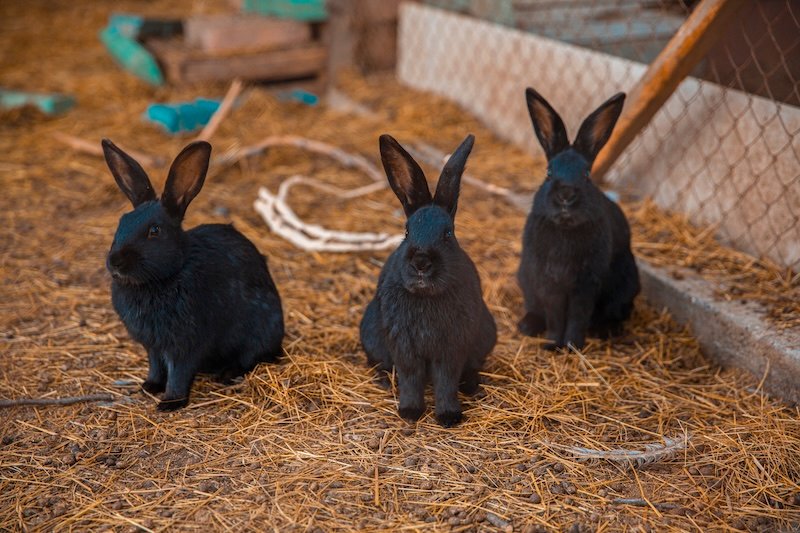
Feeding Your Meat Rabbits for Optimal Growth
Understanding Nutritional Needs
When it comes to raising meat rabbits, what they eat is super important. It’s not just about filling them up; it’s about giving them the right stuff to grow quickly and stay healthy. We’ve learned that a balanced diet is key. Rabbits need a good mix of protein, fiber, and other nutrients. Think of it like this: we wouldn’t eat junk food all day and expect to feel great, and neither should our rabbits. A good starting point is to understand the basics of rabbit nutrition.
Feed Conversion Efficiency
One of the cool things about raising rabbits is their feed conversion efficiency. Basically, this means they turn food into meat really well compared to some other animals. To make the most of this, we need to pay attention to what we’re feeding them. It’s not just about the amount of food, but also the quality. We aim for a diet that helps them grow fast without wasting feed. This is good for our wallets and also makes the whole process more sustainable. We’ve found that using high-quality pellets designed for meat rabbits makes a big difference.
Supplementing Their Diet
While commercial pellets are a great base, we also like to supplement our rabbits’ diet with other things. Hay is a must – it helps with their digestion and keeps them happy. We also give them fresh veggies sometimes, like leafy greens. Just be careful not to overdo it, as too many greens can cause digestive issues. It’s all about finding the right balance. Remember, a happy rabbit is a healthy rabbit, and a healthy rabbit grows well. Here are some things to keep in mind:
- Always provide fresh, clean water.
- Introduce new foods gradually to avoid upsetting their stomachs.
- Monitor their weight and adjust their diet as needed.
We’ve found that keeping a close eye on our rabbits’ eating habits and adjusting their diet accordingly is key to maximizing their growth and overall health. It’s a bit of a learning curve, but once you get the hang of it, it becomes second nature.
Breeding and Managing Your Rabbit Herd
Establishing a Breeding Program
When it comes to raising meat rabbits, a solid breeding program is key. We usually start with a breeding trio: two does and one buck. This setup helps ensure a steady supply of kits. Rabbits are quick breeders, capable of breeding every 6-8 weeks, with a gestation period of only about 28-32 days. This rapid cycle makes them an efficient choice for meat production. A first-time doe can be bred around 18-22 weeks.
To keep things organized, we track breeding dates, weights, and litter sizes. This helps us identify our most productive does and bucks. For example, if a doe consistently produces large, healthy litters, we prioritize her offspring for future breeding. This is where good record keeping comes in handy.
Weaning Kits for Health
Weaning is a critical stage for both the kits and the doe. We aim to wean kits around 6 weeks of age. This gives the doe enough time to recover before her next breeding cycle.
- Early weaning can stress the kits.
- Late weaning can exhaust the doe.
- Proper nutrition during weaning is crucial for healthy growth.
Weaning at the right time ensures the doe has enough energy for subsequent litters, supporting a continuous breeding cycle while maintaining the health of both the mother and the kits.
Tracking Breeding Schedules
Keeping accurate records of breeding schedules is essential for efficient rabbit management. We use a simple system to track breeding dates, expected kindling dates, and weaning schedules. This helps us avoid surprises and ensures we’re always prepared. We also set reminders for breedings, kindlings, and weaning. This way, we don’t miss important dates. By carefully managing breeding schedules and litter sizes, we can maintain a consistent supply of meat. It’s also important to consider culling decisions based on performance data such as feed efficiency, litter size, and growth rate. This helps improve the overall quality of our herd.
Maintaining Rabbit Health and Well-Being
As homesteaders, we know that healthy animals mean a thriving operation. When it comes to our rabbits, preventative care and attentive observation are key. Let’s dive into how we keep our bunnies happy and healthy.
Common Rabbit Ailments
Rabbits, like any animal, are susceptible to a range of health issues. Being aware of these potential problems helps us catch them early and take action. Some common ailments we watch out for include:
- Respiratory infections: Sneezing, runny nose, and labored breathing are red flags. Good ventilation in the rabbit housing is key to prevention.
- Digestive issues: Stasis (slowdown of the digestive system) is a serious concern. We ensure they have plenty of hay to keep things moving.
- Sore hocks: Ulcerations on their feet from standing on wire. Providing solid flooring in parts of their hutch helps.
- Parasites: We keep an eye out for ear mites, fleas, and worms. Regular checks and appropriate treatments are important.
- Dental problems: Overgrown teeth can cause pain and difficulty eating. Providing chew toys helps keep their teeth trimmed.
Preventative Care Practices
Prevention is always better than cure. We’ve found that a few simple practices go a long way in keeping our rabbits healthy.
- Cleanliness: We regularly clean and disinfect hutches to prevent the spread of disease.
- Proper diet: A balanced diet of hay, pellets, and fresh veggies keeps their immune systems strong. We make sure they have a diet rich in fiber.
- Stress reduction: Minimizing stress is important. We avoid sudden changes in their environment and handle them gently.
- Quarantine: New rabbits are quarantined for a few weeks before introducing them to the herd to prevent disease spread.
We always make sure our rabbits have access to fresh, clean water. Dehydration can lead to a host of health problems, so we check their water bottles and bowls daily.
Daily Health Checks
Taking a few minutes each day to observe our rabbits can help us catch problems early. We look for:
- Changes in appetite or water intake
- Lethargy or unusual behavior
- Discharge from eyes or nose
- Lumps, bumps, or sores
- Changes in droppings (size, shape, consistency)
If we notice anything concerning, we consult with our vet right away. Early intervention can make a big difference in the outcome. We also keep records of any treatments or medications given, which helps us track their health over time. We use Everbreed to help us with raising rabbits for meat and keep track of all the important information.
Processing Your Meat Rabbits
Humane Butchering Practices
When it comes time to process our rabbits, we always prioritize humane methods. It’s important to approach this task with respect for the animal. There are several ways to ensure a quick and stress-free dispatch. We’ve found that a swift strike to the head, followed by bleeding out, is effective. It’s not easy at first, but with practice, it becomes a manageable part of raising livestock.
Yield and Meat Portions
Understanding the yield you’ll get from each rabbit is key to planning your meals and managing your rabbitry. Generally, you can expect a dressed weight (the weight after processing) to be about 50-60% of the live weight. This means a 5-pound rabbit will yield around 2.5 to 3 pounds of meat. We typically portion the meat into cuts similar to chicken – legs, thighs, loins, and the carcass for stewing. Knowing your average yield helps in calculating how many rabbits you need to raise to meet your family’s protein needs. Rabbit meat can be substituted for chicken in most recipes.
Utilizing All Parts of the Rabbit
One of the great things about raising rabbits is that very little goes to waste. Beyond the meat, the pelts can be tanned and used for clothing, blankets, or crafts. The organs can be fed to pets (raw or cooked), and the bones can be used to make nutritious bone broth. Even the manure is incredibly valuable as a fertilizer for the garden. We compost ours, and it works wonders for our vegetables. Learning to use all parts of the rabbit is not only economical but also aligns with a sustainable homesteading philosophy.
It’s easy to feel overwhelmed when you first start processing rabbits. Don’t be afraid to seek out guidance, whether it’s from experienced homesteaders or online resources. The key is to start small, be patient with yourself, and always prioritize humane treatment of the animals.
Here’s a quick breakdown of what you can utilize:
- Meat: Primary source of protein.
- Pelts: Tanning for fur products.
- Organs: Pet food or composting.
- Bones: Bone broth.
- Manure: Composted for garden fertilizer.
Maximizing Your Rabbitry’s Potential

Record Keeping for Success
Okay, so you’ve got your rabbitry up and running. Now what? Well, if you want to actually make something of it, we’ve found that keeping detailed records is non-negotiable. We’re talking about everything: breeding dates, litter sizes, growth rates, feed consumption, any health issues… the whole shebang. Trust us, it might seem tedious at first, but it pays off big time.
Why bother? Because with solid records, you can:
- Identify your most productive does and bucks. Which ones are consistently producing healthy, fast-growing kits? Breed those!
- Track feed conversion efficiency. Are some rabbits eating more but growing slower? Time to adjust their diet or consider culling.
- Spot potential health problems early. A sudden drop in weight or change in behavior can be a red flag, and you’ll catch it sooner with good records.
- Make informed breeding decisions. Want to improve a specific trait, like meat yield? Look at the records and choose breeders accordingly. We use rabbit breeding schedules to keep track of everything.
Think of it like this: your rabbitry is a business, and records are your financial statements. You wouldn’t run a business without knowing where your money is going, right? Same goes for rabbits.
Scaling Your Operation
So, you started small, maybe with just a few does and a buck. But what if you want to expand? Scaling up can be exciting, but it also comes with challenges. Here’s what we’ve learned:
- Start with a solid foundation. Make sure your existing setup is running smoothly before you add more rabbits. Fix any problems with housing, feeding, or health management first.
- Plan your expansion carefully. Don’t just randomly add more hutches. Think about how many rabbits you want to end up with, how much space you’ll need, and how you’ll manage the increased workload.
- Consider your market. Are you selling meat to friends and family, or do you want to supply local restaurants or farmers’ markets? Make sure there’s enough demand to justify your expansion. We’ve found that keeping meat rabbits is a great way to make some extra money.
- Automate where possible. As your rabbitry grows, manual tasks like feeding and watering can become overwhelming. Invest in automatic systems to save time and effort.
Financial Returns and Sustainability
Let’s be real: raising meat rabbits should be sustainable, not just environmentally, but also financially. If you’re spending more than you’re earning, something’s gotta change. Here’s how we approach it:
- Track all your expenses. Feed, housing, equipment, veterinary care… everything. Know exactly how much it costs you to raise each rabbit.
- Calculate your income. How much are you selling the meat for? Are you also selling pelts or manure? Factor in all sources of revenue.
- Analyze your profit margins. Are you making enough money to justify the time and effort? If not, look for ways to cut costs or increase income. Feed conversion is a big one here – are your rabbits efficiently turning feed into meat?
- Focus on sustainability. Use local feed sources, compost the manure, and minimize waste. Not only is it good for the environment, but it can also save you money in the long run. We’ve found that culling decisions can be easier when you have all the data in front of you.
| Item | Cost per Rabbit | Income per Rabbit | Profit Margin | Notes |
|---|---|---|---|---|
| Feed | $15 | Based on average consumption | ||
| Housing | $5 | Amortized over 5 years | ||
| Veterinary | $2 | Routine care | ||
| Meat Sales | $40 | Average price per processed rabbit | ||
| Pelt Sales | $5 | If applicable | ||
| Total | $22 | $45 | $23 | Net profit per rabbit |
Wrapping Up Our Rabbit Talk
So, that’s the scoop on raising meat rabbits. It’s pretty cool how these little guys can fit into a homesteading setup, even a small one. You get good meat, and they don’t need a ton of space or fancy stuff. Plus, their manure is like gold for the garden. It’s not super hard to get started, and once you get the hang of it, it just makes sense. If you’re thinking about adding something new to your backyard, or just want to know where your food comes from, rabbits are a solid choice. Give it a shot!
Frequently Asked Questions
Why should I consider raising meat rabbits?
Raising meat rabbits is a smart choice for many reasons. They grow fast, don’t need much room, and turn their food into meat very well. This makes them a great way to produce your own food, even in a small backyard.
What do I need to begin raising meat rabbits?
To get started, you’ll need to buy some rabbits, set up their living spaces (like cages or hutches), and get feeders and waterers. You’ll also need to budget for their food. The initial cost can vary, but it’s often less than starting with other farm animals.
What are the main benefits of raising meat rabbits?
Rabbits are ready to be harvested for meat quite quickly, usually in about 8 to 12 weeks. Their meat is lean and healthy, and you can also use their manure for gardening and their fur for other products.
Which rabbit breeds are best for meat production?
Some popular meat rabbit breeds include New Zealand and Californian. When picking a breed, think about what grows well in your area and how fast they get big enough for meat.
How should I set up housing for my rabbits?
You can house rabbits in individual cages or in a group setup called a colony. No matter which you choose, make sure they have good airflow and a comfortable, clean place to live.
What should I feed my meat rabbits?
Rabbits need a balanced diet to grow well. They turn their food into meat very efficiently. You might also want to give them extra greens or hay to make sure they get all the nutrients they need.
How do I manage breeding in my rabbit herd?
It’s important to plan out when your rabbits will have babies to keep your herd growing. Make sure the young rabbits are strong enough before they stop drinking their mother’s milk, and keep good records of breeding times.
How can I keep my rabbits healthy?
Keep an eye out for common rabbit sicknesses. The best way to keep them healthy is to prevent problems with good hygiene, a proper diet, and daily checks to make sure they’re doing well.






